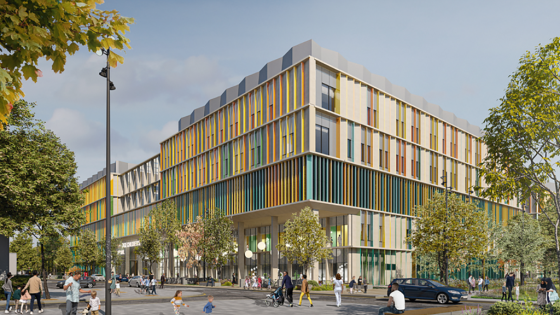Construction of a new specialist paediatric hospital in Cambridge has moved a step closer.
The outline business case for the Cambridge Children’s Hospital was signed off by the treasury and health ministry this month.
This step recognises that the project “has the appropriate funding streams in place” to deliver the scheme, Cambridge University Hospitals NHS Foundation Trust said on Monday (26 August).
“The project has been given the green light to begin the detailed process of appointing a [main] contractor,” it added, although a full business case still needs to be approved.
A spokesperson for Cambridge University Hospitals NHS Foundation Trust told Construction News that a tender for main contractors will be launched in January 2025.
Main works are set to begin later that year and last until 2026. The BREEAM Excellent-designed building is expected to open in late 2028.
Dr Rob Heuschkel, the future hospital’s clinical lead for physical health, said he was “absolutely delighted that we can now move forward to enter contracts with a construction partner, so we can finally start to see work happening on site”.
The Cambridge Children’s Hospital project is a partnership between Cambridge University Hospitals NHS Foundation Trust, Cambridgeshire and Peterborough NHS Foundation Trust, and Cambridge University.
It aims to integrate mental and physical paediatric care, as well as research into childhood illnesses, in a single centre of excellence covering the East of England.
The new hospital is valued at £214.9m, according to data intelligence provider Glenigan.
In February, Norwich-based contractor RG Carter began preconstruction works on the 46,200 square metre brownfield site opposite the Rosie Maternity Hospital. The firm is connecting services to the site, building access roads and excavating the site before main construction begins. The groundworks phase is due to end in December this year.
The five-storey, 35,000 square metre hospital building itself will include a 5,000 square metre Cambridge University research institute.

